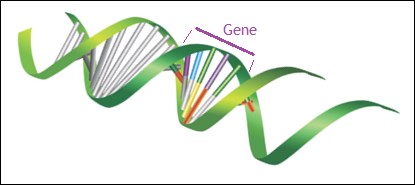Evolution
The theory of evolution, enunciated by Charles Darwin, describes the morphological adaptation of living organisms [10:3].
The origin
The Darwinian process consists of optimizing the morphology of organisms to adapt to the harshest environments—hydrodynamic optimization for fish, aerodynamic for birds, or stealth skills for predators. The following diagram shows a gene:

Visualization of a DNA strand
The (genetic) population of organisms varies over time. The number of individuals within a population changes, sometimes dramatically. These variations are usually associated with the abundance or lack of predators and prey as well as changing environments. Only the fittest organisms within the population are able to survive over time by adapting effectively to sudden changes in living environments and adjusting to unforeseen constraints.
NP problems
Nondeterministic Polynomial (NP) problems relate to the theory of computation and, more precisely, time and space complexity. Categories of...




































































